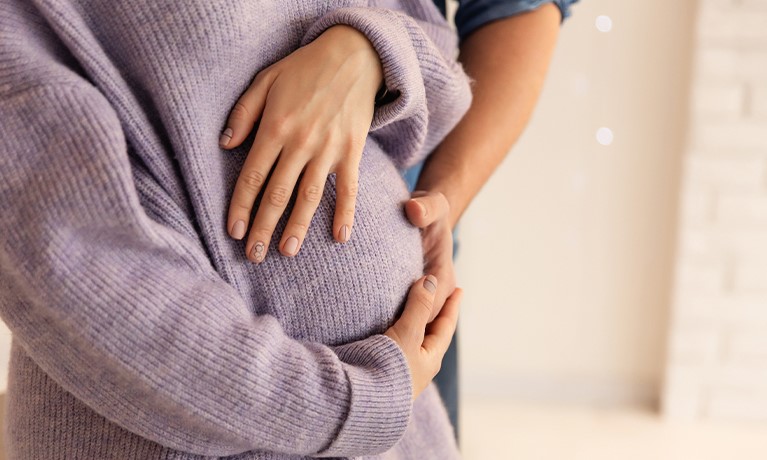Search
New global guidelines on the management of pregnancy and childbirth for people with hypermobility conditions developed by researcher

Thursday 16 May 2024
Press contact
A Coventry University researcher has led the co-creation of new evidence-based strategies and approaches to improving care and health practices for people with hypermobility conditions during pregnancy and childbirth.
The expert clinical guidance is designed to support people with two types of hypermobility conditions - hypermobile Ehlers-Danlos Syndrome (hEDS) and Hypermobility Spectrum Disorder (HSD) - which can lead to complications during pregnancy and childbirth.
HEDS affects connective tissue throughout the body and is characterised by overly flexible joints, stretchy skin, and fragile tissues, while HSD includes a variety of joint and muscle symptoms similar to hEDS, and broadly requires the same management.
Usually underdiagnosed, these conditions can increase the risk of injuries and complications during pregnancy, labour and birth, potentially causing problems such as joint pain, dislocations, unexpectedly rapid births, slow wound healing, and increased bleeding.
Dr. Sally Pezaro from Coventry University's Research Centre for Healthcare and Communities has led this intercontinental research project, involving collaborators from the UK, US, Canada, France and the Netherlands, with the multidisciplinary team drawing from midwifery, obstetrics, maternal-foetal medicine, rheumatology, dietetics, genetics, and patients with first-hand experience.
The research aims to provide healthcare professionals, childbearing people, and their families with a thoughtful, evidence-based roadmap to enhance care and health outcomes during pregnancy birth and beyond.
The team address knowledge gaps and misconceptions related to hypermobility conditions and perinatal care, offering support and practical help for a smoother and more informed child -birthing experience.
The researchers first identified key areas for examination, such as pre-pregnancy screening, assessing pregnancy risks, exploring birth options and methods, managing post-birth recovery, and addressing the overall care of individuals with hEDS/HSD in the childbearing context. This part of the project involved collaboration with the Ehlers Danlos Society’s International Consortium as well as input from patients and the public.
An in-depth review of existing literature on pregnancy, childbirth, and postnatal recovery in individuals with hEDS/HSD followed to inform the co-creation process, resulting in the development of new evidence-based clinical guidelines to support the various stages of a person’s childbearing journey.
The guidelines recommend discussing potential complications and outcomes of hEDS/HSD in initial screening questionnaires for early consultation and monitoring; using long-lasting, dissolvable stitches when suitable to enhance healing; and providing physical therapy, bracing, support and assistive devices to help with functional activity.
Additionally, the guidelines advise people who are pregnant to be prepared for longer phases of latent labour followed by a potentially sudden, fast active labour and birth, which can happen outside of the expected birth location.
This work marks a significant step forward in providing specialised care for people with hEDS/HSD during their childbearing journey.
By offering these global evidence-based clinical guidelines, we aim to improve the quality of care and outcomes for these individuals, ensuring their specific needs are met with precision and compassion.
Dr Sally Pezaro, Centre for Healthcare and Communities, Coventry University
Tools to assist in supportive decision making, information gathering, and education on childbearing with hEDS/HSD can be freely downloaded via www.hEDSTogether.com.
Read the guidelines here.




